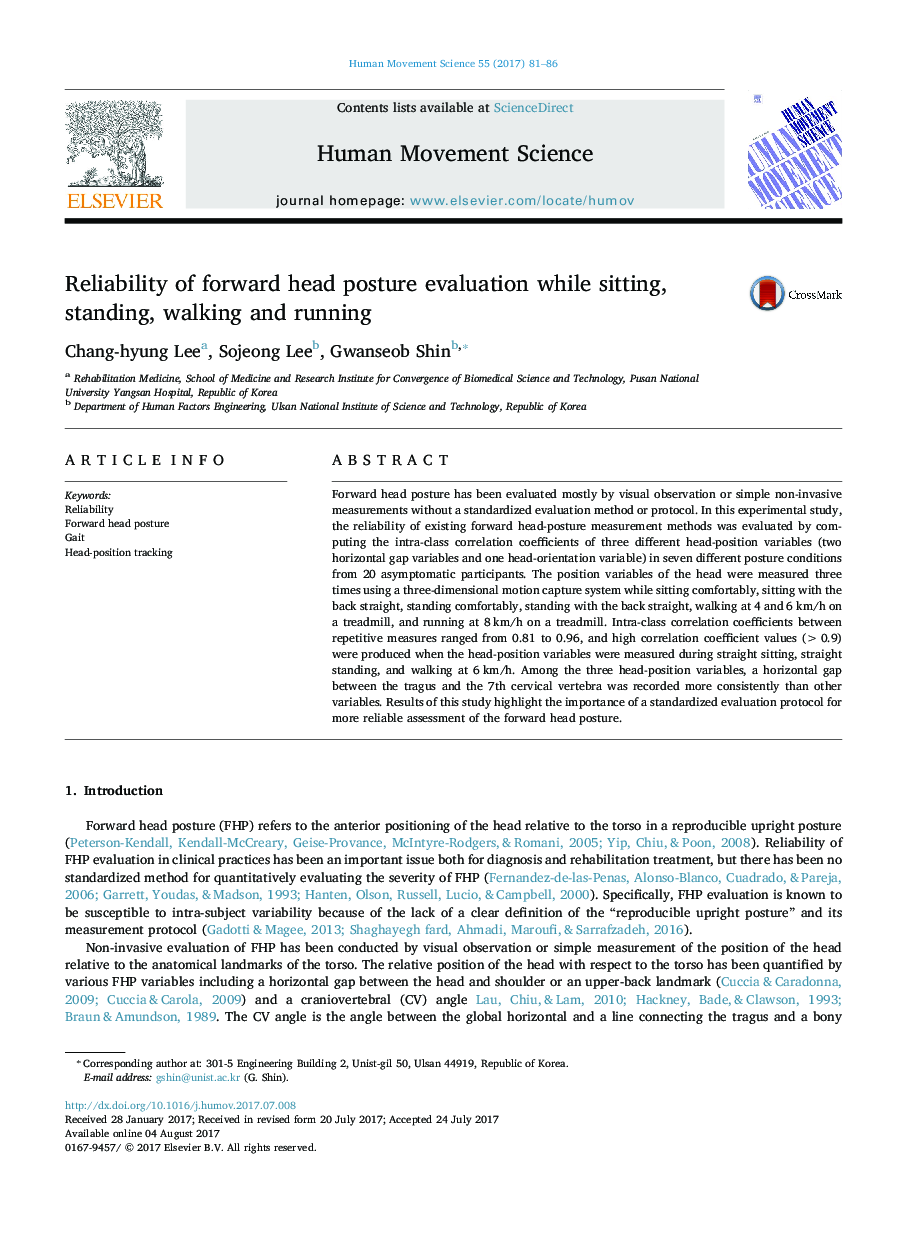| Article ID | Journal | Published Year | Pages | File Type |
|---|---|---|---|---|
| 5041931 | Human Movement Science | 2017 | 6 Pages |
â¢Test-retest reliability of FHP measurements varied between posture conditions.â¢Measurement while walking at 6 km/h resulted in high reliability (ICC > 0.9).â¢Horizontal gap between tragus and C7 was measured with high reliability (ICC > 0.9).
Forward head posture has been evaluated mostly by visual observation or simple non-invasive measurements without a standardized evaluation method or protocol. In this experimental study, the reliability of existing forward head-posture measurement methods was evaluated by computing the intra-class correlation coefficients of three different head-position variables (two horizontal gap variables and one head-orientation variable) in seven different posture conditions from 20 asymptomatic participants. The position variables of the head were measured three times using a three-dimensional motion capture system while sitting comfortably, sitting with the back straight, standing comfortably, standing with the back straight, walking at 4 and 6Â km/h on a treadmill, and running at 8Â km/h on a treadmill. Intra-class correlation coefficients between repetitive measures ranged from 0.81 to 0.96, and high correlation coefficient values (>0.9) were produced when the head-position variables were measured during straight sitting, straight standing, and walking at 6Â km/h. Among the three head-position variables, a horizontal gap between the tragus and the 7th cervical vertebra was recorded more consistently than other variables. Results of this study highlight the importance of a standardized evaluation protocol for more reliable assessment of the forward head posture.
